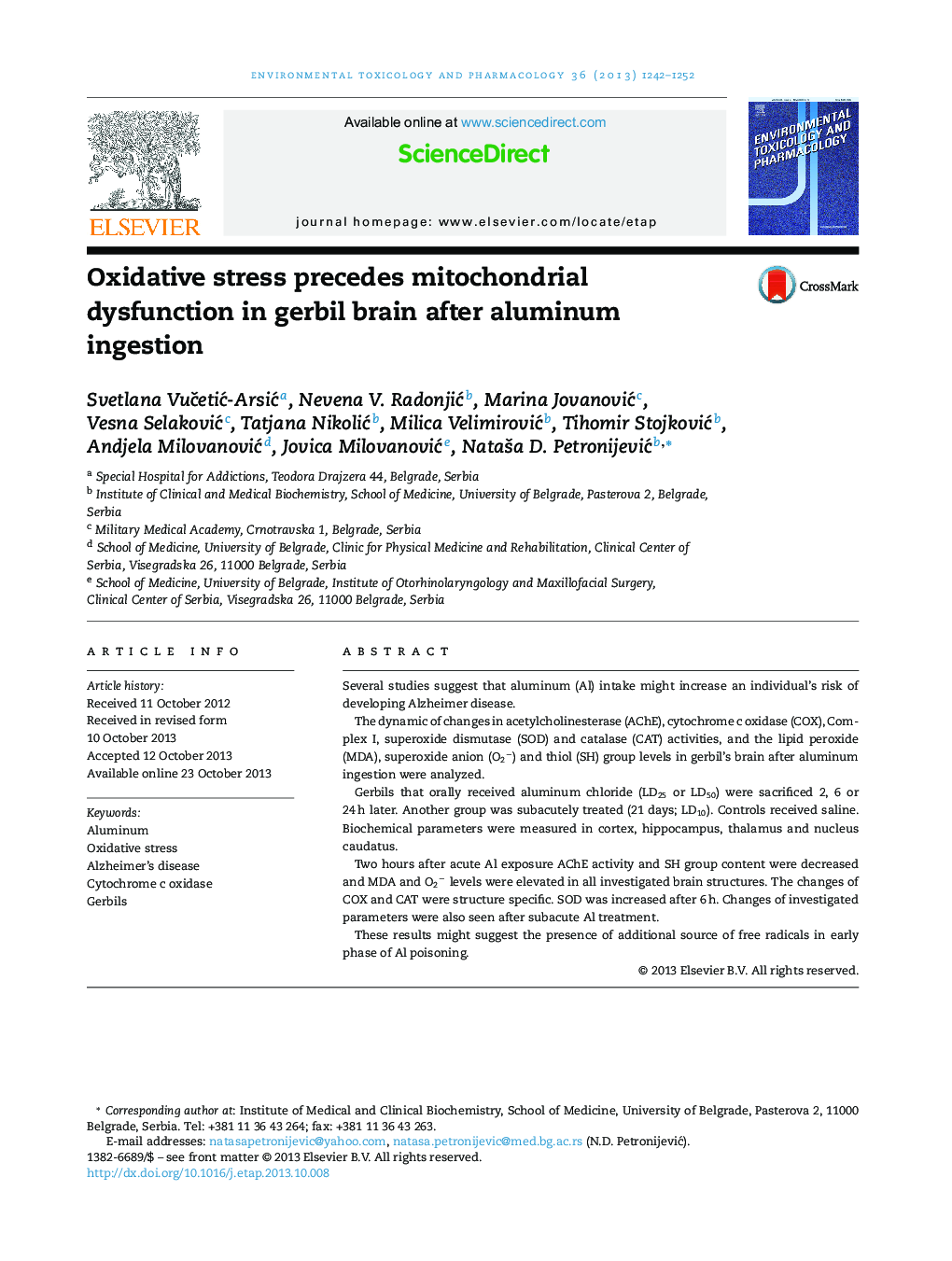| Article ID | Journal | Published Year | Pages | File Type |
|---|---|---|---|---|
| 2583119 | Environmental Toxicology and Pharmacology | 2013 | 11 Pages |
•Oxidative stress is one of the postulated mechanisms of Al-induced neurotoxicity.•We examined the dynamic of biochemical changes in gerbil's brain after Al ingestion.•The first consistent changes were in acetylcholinesterase and lipid peroxides.•Changes in cytochrome c oxidase, and antioxidative enzymes were mostly seen later.•An additional source of free radicals in early phase of Al poisoning might exist.
Several studies suggest that aluminum (Al) intake might increase an individual's risk of developing Alzheimer disease.The dynamic of changes in acetylcholinesterase (AChE), cytochrome c oxidase (COX), Complex I, superoxide dismutase (SOD) and catalase (CAT) activities, and the lipid peroxide (MDA), superoxide anion (O2−) and thiol (SH) group levels in gerbil's brain after aluminum ingestion were analyzed.Gerbils that orally received aluminum chloride (LD25 or LD50) were sacrificed 2, 6 or 24 h later. Another group was subacutely treated (21 days; LD10). Controls received saline. Biochemical parameters were measured in cortex, hippocampus, thalamus and nucleus caudatus.Two hours after acute Al exposure AChE activity and SH group content were decreased and MDA and O2− levels were elevated in all investigated brain structures. The changes of COX and CAT were structure specific. SOD was increased after 6 h. Changes of investigated parameters were also seen after subacute Al treatment.These results might suggest the presence of additional source of free radicals in early phase of Al poisoning.
